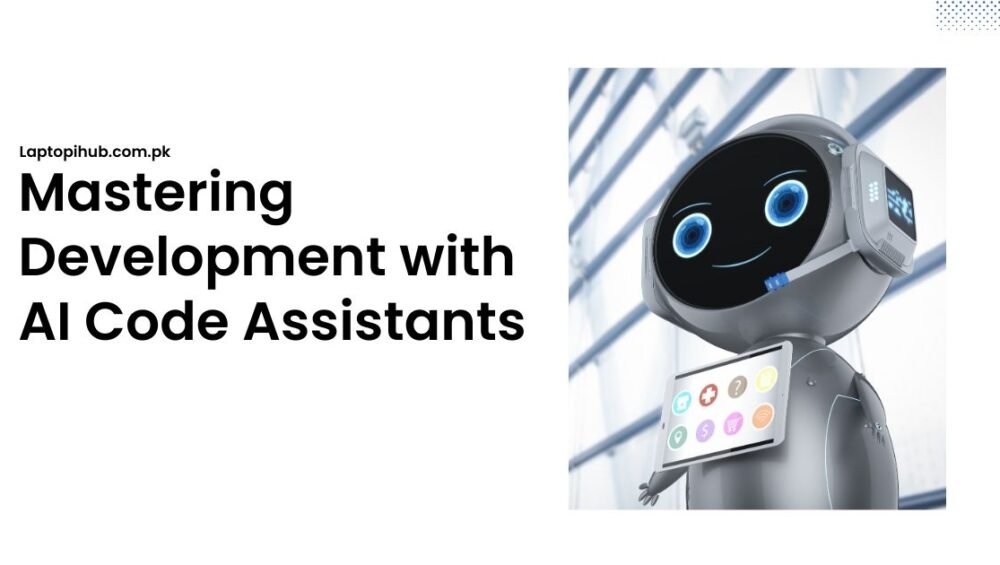AI code assistants explained in plain English—how they work, benefits, risks, best practices, prompts, metrics, and setup tips to code faster and safer.
Introduction to AI Code Assistants
AI code assistants are like hyper-attentive pair programmers who never get tired, remember the entire codebase, and can type at lightning speed. They help you write, refactor, test, and understand code across languages and frameworks. In this guide, you’ll learn what they are, how they work, where they shine, when they stumble, and how to get real value without sacrificing code quality or security.
Why AI pair programming matters now
Software teams are under more pressure than ever: faster releases, tighter budgets, broader tech stacks. AI assistants ease that pressure by accelerating routine tasks, reducing context switching, and providing instant “second opinions.” The result is more time for design, architecture, and the thorny edge cases that actually move the needle.
What this guide covers
You’ll get a plain-English tour of the tech, practical playbooks for daily work, security and compliance checklists, measurement strategies, and forward-looking ideas so you can adopt AI responsibly and effectively.
What Is an AI Code Assistant?
An AI code assistant is software powered by large language models (LLMs) that understands natural language and source code. It integrates with your IDE, terminal, or repository to suggest code, explain snippets, answer questions about your project, and automate repetitive engineering tasks.
From autocomplete to pair programmer
Traditional autocomplete predicts a token or two. Modern assistants propose whole functions, tests, docstrings, or refactors in context. They act more like a junior dev sitting next to you: you describe the intent; they draft options; you review and merge.
Common types and where they live (IDE, CLI, cloud)
Most assistants plug into editors like VS Code, JetBrains IDEs, or Neovim. Some run in the CLI to generate files or answer repo questions. Others live in cloud platforms and connect directly to your Git provider, CI/CD, and documentation.

How AI Code Assistants Work
Large language models in plain English
LLMs are trained on massive datasets of text and code, learning patterns that map intents to outputs. When you ask, “Write a function to validate an email in Python,” the model predicts the most likely, syntactically valid code that meets your constraint—guided by your project’s style and surrounding context.
Context windows, embeddings, and repo awareness
Assistants don’t read your entire repository at once. They focus on a “context window”—a slice of relevant code, comments, and docs. Embeddings turn code and prose into vectors, enabling semantic search to fetch the most relevant files into that window. Better context means better suggestions.
Privacy modes and on-device vs. cloud inference
Enterprises often require strict data controls. Many assistants offer local inference or “no-training” modes so your prompts and code aren’t retained. Some tools can run on a developer workstation or VPC; others rely on hardened cloud endpoints with encryption, redaction, and auditing.
Core Capabilities
In-line completions and multi-line suggestions
You start typing; the assistant proposes the next few lines or an entire function. Accept what works, reject what doesn’t—fast iterations keep you in flow.
Code generation and scaffolding
From CRUD endpoints to React components and Terraform modules, assistants can bootstrap structures, wiring, and boilerplate so you focus on logic and UX.
Refactoring and style normalization
They suggest idiomatic patterns, break up long functions, and align code with your formatter and linter rules. Think of it as a guardian of consistency.
Documentation and comment synthesis
Clear comments, JSDoc/Pydoc stubs, and ADR drafts can be produced from code and commit diffs. Your future self (and teammates) will thank you.
Unit test generation and test maintenance
Assistants generate happy-path and edge-case tests, stub dependencies, and keep tests in sync during refactors. You still own coverage and assertions, but drafting goes faster.
Bug detection and fix proposals
They flag suspicious branches, race conditions, or unchecked inputs, then propose minimal patches. You verify logic and side effects before merging.
Semantic code search and repo Q&A
Ask, “Where do we normalize time zones?” and get semantic matches across the repo, with summaries and links to the relevant functions.

Practical Benefits
Speed and flow
By automating repetitive glue work, assistants reduce context switching and keep you in the zone. That’s where high-quality code happens.
Quality, consistency, and safer defaults
Consistent patterns, early bug surfacing, and test scaffolds nudge teams toward better engineering hygiene.
Learning, onboarding, and polyglot support
New hires can ask “explain like I’m new here” questions about code. Senior engineers can jump between languages without constantly Googling syntax.
Limitations and Risks
Hallucinations and subtle errors
LLMs can be confidently wrong. They may invent APIs or miss edge cases. Always run tests, use linters, and read the diff like you would a junior teammate’s PR.
Security, licenses, and provenance
Generated snippets can mirror patterns from public code. You need policies for license compatibility, third-party code checks, and SBOM updates.
Data leakage and compliance
Avoid sending secrets, personal data, or proprietary algorithms in plain text to third-party endpoints. Use redaction, vaults, and org-approved settings.
Overreliance and skill drift
If you let the assistant think for you, your debugging muscles atrophy. Keep reasoning skills sharp with deliberate practice and regular code reading.

Choosing the Right Assistant
IDE and framework compatibility
Pick tools that integrate cleanly with your editor and CI. Friction kills adoption; the best assistant is the one your team actually uses.
Language and domain coverage
Web backends, mobile, data engineering, game dev—ensure strong support for your stack, libraries, and frameworks.
Enterprise controls and admin features
Look for SSO, role-based permissions, usage analytics, prompt/redaction controls, and audit logs.
Pricing and usage models
Some price per seat; others by tokens or minutes. Model choice, context size, and repo indexing can materially affect cost.
Workflow Playbooks
TDD with an assistant
Write a failing test, ask the assistant to propose a minimal implementation, run tests, and iterate. Keep the loop tight and the scope clear.
Legacy modernization sprint
Point the assistant at a module with tech debt. Request a refactor to modern syntax, stronger typing, and improved error handling. Validate behavior with snapshot tests.
Greenfield MVP build
Describe the domain model, routes, and UX. Let the assistant scaffold core files, then refine logic and performance by hand.
Bug bash and refactor days
Queue known issues, ask for minimal diffs, and enforce strict reviews. Assistants shine at repetitive, low-risk cleanups across large codebases.
Prompting That Works
Roles, constraints, and examples
Set the role (“You are a senior TypeScript engineer”), add constraints (“use Zod validation, prefer async/await”), and give examples (“here’s our API style”). Specificity reduces guesswork.
Anti-patterns to avoid
Vague asks like “make it better” lead to random results. Overly long prompts can also dilute context. Keep prompts crisp, grounded in your code, and focused on one task at a time.






